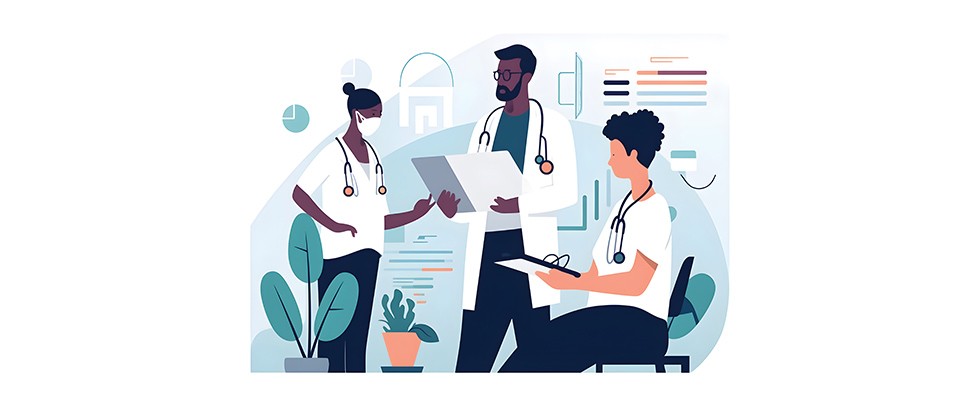
Home-based care is in the midst of a transformative evolution characterized by reliance on data-driven insights and strategies. The crux of this revolution lies in the concept of data maturity—a pivotal factor that helps organizations harness the power of data to embark on informed decision-making processes.
Yet some data-driven projects fail because organizations try to run before they can walk. In other words, they have impactful goals in mind, but they haven’t yet mastered the necessary skills to achieve them.
We like to think about a framework for developing data maturity capabilities that we call the “crawl, walk and run” milestones. It’s time to delve into these three stages and explore how home-based care executives can use this framework to design and implement effective, outcome-oriented strategies.
The Crawl Stage: Begin Simple, Begin Smart
In the initial phase of data maturity, organizations should embark on their journey with a clear goal in mind. However, once that goal is set, don’t immediately jump into an entirely new set of data collection tools, technologies and processes.
In the face of overwhelming data, start simply to avoid confusion. Let’s start by crawling. Take inventory of what you already have and think about the simplest, most direct way to move toward that end goal without a massive commitment to radical change. That will come later. For now, understand the nature and potential of existing data and align it with your organizational objectives—make the data work for you, not the other way around.
As you grow more comfortable with data collection and interpretation, you prepare to take the next step into the walking stage.
The Walk Stage: Connect, Prioritize & Add On
With a solid foundation in place, it’s time to move to the walk stage. This stage marks the expansion of data insights, made possible through the process of connecting, prioritizing and adding to existing data. The walking stage encourages evolution and iterative learning. It’s about staying dynamic and flexible, learning from earlier stages and making necessary adjustments.
Acquiring data visualization tools at this stage is an excellent investment, as they aid in comprehensive data interpretation and reporting. As you gain a more robust understanding of your data, you inch closer to the run phase.
The Run Stage: Time to Take Meaningful Action
The “run” stage marks the culmination of the data maturity journey. Organizations in this phase are equipped with comprehensive data insights and are prepared to take meaningful action. High-quality data visualizations are your best friends in this stage, making it easy to identify areas of improvement and untapped opportunities.
However, data visualizations are only as good as the actions they inspire. Implementing follow-up measures based on data analytics is essential to making the most of your insights. This stage calls for participation from all members of
the organization.
Remember, the true powers of data and technology manifest only when they’re championed by people. By the time you get to this stage, you will have a better understanding of how to realign stakeholder groups, which processes to redesign and what systems and technologies you’ll need to support them.
Sample Workflow
Here’s a quick example of a potential workflow that encompasses the crawl-walk-run stages.
1. Identify relevant data sources.
- Client assessments: Collect comprehensive data during initial assessments to establish a baseline for care plans.
- Caregiver logs: Document caregiver activities, including client interactions, medication administration and vital sign monitoring.
- Incident reports: Capture data on incidents, accidents or any unexpected occurrences to identify areas for improvement.
2. Analyze patterns & trends.
- Identify recurring patterns in client needs and preferences to personalize care plans and enhance client satisfaction.
- Monitor caregiver performance metrics like response times and overall productivity to ensure optimal service delivery.
3. Make informed decisions.
- Utilize collected data to identify opportunities for process improvement, such as optimizing scheduling or streamlining administrative tasks.
- Analyze client outcomes to make data-driven decisions regarding treatment plans, therapies and interventions.
4. Enhance care coordination.
- Share relevant data with other health care providers involved in the client’s care to ensure continuity and improve collaboration.
- Utilize electronic health record systems to streamline communication and facilitate the exchange of critical client information securely.
5. Monitor compliance and quality.
- Track adherence to industry regulations, compliance standards and best practices to maintain quality care and mitigate potential risks.
- Regularly review data to identify any potential gaps in compliance and implement corrective measures promptly.
Data maturity is no longer a choice; rather, it’s a necessity in today’s complex home-based care environment. The journey toward data maturity may seem daunting initially, with the need for meticulous data gathering and analysis. However, having a clear road map from the beginning will help your organization navigate this journey more effectively.
The stages of data maturity—crawl, walk and run—form a comprehensive blueprint for enterprise data strategy development and execution. Understanding where they stand on this spectrum assists home-based care executives in implementing changes to achieve desired goals. More importantly, it will keep them from making costly mistakes in ill-advised investments before they understand what they really need.
By dedicating time and resources to build a robust data-driven decision-making process, organizations equip themselves to make informed decisions that have far-reaching benefits.
